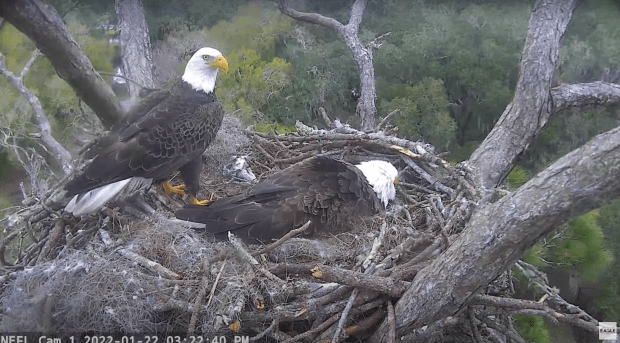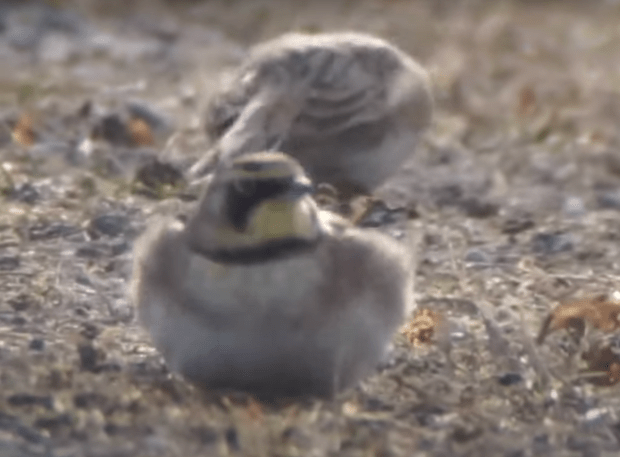23 December 2022
Oh, good morning to everyone!
What a blistery week it has been. The garden animals are all poofed trying to keep warm in the chill winds and -21 degree C temperatures. It has gotten a little warmer!!! And by next week, it will be absolutely balmy at -2 on Wednesday. Crazy. We can adjust our clothing and footwear. These poor babies.
We have called Dyson the ‘monk’ for a long time. When she comes to the window with her little paws folded, it is a sign that all of the food for her is gone. Time to refill! No pressure, right? Just look at that sweet face.


I continue to be impressed with the book, Slow Birding. The chapter on House Sparrows really opened my eyes. They live where we live and the first sentence of the chapter asks, ‘Who Doesn’t Love House Sparrows’? I surely do and get quite irked at those who try specifically to feed other prettier birds (to them) and thwart the sparrows. Like falcons, they exist on every continent but, Antarctica. There are fossils dating back 400,000 years in the Middle East where the sparrows followed the progress of agriculture. They would eat the seeds left in the plowed fields. Today, the planting seasons have turned topsy turvy and they are on The Red List. They were traditionally planted in the fall not in the spring and that single change would help the birds survive in the UK. To add to that, the cessation of using pesticides and herbicides would benefit the ability of the parents to feed their young. No insects, no food for the little ones. Did you know that once they hatch, the chicks need 3000 to 4000 thousand insects to eat til they fledge. This is approximately 200 to 300 trips a day, in and out of the nest, to feed the wee ones. This will continue for two weeks. Today, in North America we are lucky to have them and their beautiful songs in our gardens. Feed them! And don’t use chemicals on your lawn. Promote insects by leaving your leaves in the fall. Help these wee ones out whenever you can!

I know that many of you will remember that one or the other of Diamond and Xavier have brought in a Green Parrot to the scrape at Orange. Here is an interesting story from The Guardian about them and the numbers that have flown to Tasmania for breeding season.

Please do not think that birds are ‘bird brained’! Just trying getting a Rowanberry from one of the lovely and fierce Redwings.


Today, Samson would be nine years old ——way too early to be gone ——and a YouTube video honouring his hatch day is making the rounds. Thanks ‘J’ for bringing it to my attention.
It is so difficult to catch a peek of the two little eaglets at Superbeaks but, that said, everything seems to be going just fine. Food is plentiful and both parents, PePe and Muhlady, are extremely attentive.

Glad to have a final and definitive word on the status of Rita. Things get carried away in chats and on FB. Terry Carman gives us the latest:



Always so happy to have one of Elain’s videos of the Orange Peregrine Falcon scrape to share:
A brief look at one of the Audubon Center’s Ambassadors who lived their life in car for 31 years. Incredible. And still going strong. If you ever get near enough to Maitland, Florida – on the west coast near Fort Myers – stop in and visit the Audubon Center for Birds of Prey. You will sadly not see Smedley but you could see Bailey, his long term Osprey mate. You might also see many of the other ambassadors.

So here is Francis from a wee nestling in care to being all grown up. Oh, I miss those little eaglets. Can’t wait for Harriet and M15’s two to hatch. Let the beaking begin!!!!!!! And it will. There is no doubt about it but, it will stop.

Oh, what a delight. Andor and Cruz were on the Fraser Point nest today. You might remember that these are the parents of Victor who went into care and Lillibet from 2022. So good to see you!
They refused to pose nicely but who cares. So lovely to see both of them together at the nest!



With that luck, I thought I would check on Thunder and Akecheta and there they were together! What a great day with our Channel Islands Bald Eagles. There they are, sitting together, looking out over the water into the sunshine on that high cliff to the left. I believe it is called Tor.

I ran out of luck at Two Harbours. No Chase or Cholyn when I checked.

The cams came back up at the Northeast Florida nest. V9 flew in and chortled but no Gabby. He waited for ten minutes and flew off. I wonder if they will both return to the nest tonight? We wait. Lady Hawk caught V9 flying in.
Gabby has been at the nest and she has brought some new greenery in. We wait, watch, and hope for our girl.


‘A’ sends word that there has been a changeover at the Taiaroa Head Royal Albatross nest. These two are doing so well. The sky calls are like nothing else. Oh, how I loved the little ones doing sky calls with OGK. Tears.
Zoe is certainly developing her diving skills and it is only a matter of time before an unlucky fish comes along and she snaps it up. It would be fantastic to see her bring one in to the nest that she caught right from the natal barge. Her love of fish will certainly be a motivator!
Speaking of fish, Dad is doing an amazing job feeding Zoe. Today she had no more than finished one fish than he flew in with another quite nice one. Her crop will pop!

You can see Zoe’s crop. I sure hope that Dad is eating himself!!!!!! He is really taking excellent care of his ‘little’ girl.



Thank you so very much for being with me today. Please take care. See you soon!
Thank you to the following for their notes, their videos, their posts, and their streaming cams that make up my screen captures: ‘J’ and ‘A’, Port Lincoln Osprey, NZ DOC and Cornell Bird Lab, NEFL-AEF, Institute for Wildlife Studies and Explore.org, Audubon Center for Birds of Prey, Elain and Charles Sturt Falcon Cam and Cilla Kinross, Superbeaks, Bald Eagles Live Nest Cam and News and Terry Carman, and The Guardian.




























































































